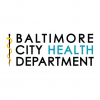Baltimore City Announces Beginning of Code Blue Season
Wednesday Nov 15th, 2017
FOR IMMEDIATE RELEASE
BALTIMORE, MD (November 15, 2017)—Mayor Catherine E. Pugh and Health Commissioner Dr. Leana Wen today announced the start of Baltimore City’s Code Blue program for the coming winter. Code Blue is a multi-agency effort to reduce hypothermia deaths by protecting homeless individuals, seniors, infants and other vulnerable populations from extreme cold weather.
“We’ve had a few cold days and we know there are plenty more to come,” said Mayor Catherine E. Pugh. “It is important for all of us to work together to ensure all Baltimore City residents are safe from the cold.”
Through March 2018, the Health Commissioner will declare a Code Blue alert based on the following criteria:
- Temperatures, including wind chill, are expected to be 13˚F or below. This threshold can be reached by having a temperature at or below 20˚F with 5 mph sustained winds or a temperature at or below 25˚F with 15 mph sustained winds.
- Other conditions (i.e. strong winds, forecasted precipitation for more than two hours, extended period of cold, sudden cold after a warm period) deemed by the Health Commissioner to be severe enough to present a substantial threat to the life or health of vulnerable Baltimore citizens.
During the Code Blue season, City agencies work together to:
- Increase overflow capacity at homeless shelters and encourage private homeless shelters to extend their hours and keep people indoors
- Distribute meals to at-risk senior citizens
- Provide home weatherization services
- Help individuals apply for emergency assistance
- Provide additional cold weather education and outreach efforts, as needed
Last winter (November 2016 through March 2017), the state Medical Examiner’s office recorded 12 hypothermia-related deaths in Baltimore City. Based on the historical data, populations in Baltimore City most vulnerable to hypothermia death include the elderly, individuals with pre-existing heart conditions, those with substance use disorder, and individuals experiencing homelessness.
“As we brace for colder temperatures in the months ahead, we will monitor weather changes and urge people to stay indoors in safely heated areas to minimize the risk of hypothermia,” said Dr. Leana Wen, Baltimore City Health Commissioner. “If you must go outside in the cold, dress warmly and stay dry.”
Residents lacking heat are reminded of the dangers of carbon monoxide poisoning from using generators or gas ovens in enclosed spaces.
At this time of year, it is also important to remember to take special care for infants to keep them safe and healthy:
- Refrain from smoking (tobacco and marijuana) indoors, especially around infants;
- When inside, don’t over bundle your baby. If a room’s temperature is comfortable for you, it is comfortable for your baby; and
- If you are worried that your baby will be chilly, you can dress your baby in a wearable blanket or one-piece pajama. Avoid covering babies with blankets and comforters which can suffocate a baby.
For more information on energy assistance, contact the Office of Home Energy Programs at 410-396-5555.
For more information about cold weather sheltering, contact the Mayor’s Office of Human Services at 311, 211 or on their website.
For more information about Code Blue, visit the Health Department’s website at http://health.baltimorecity.gov/.
For other cold-related inquiries and service requests, or to find a nearby homeless shelter, residents can call 311 or 211.
